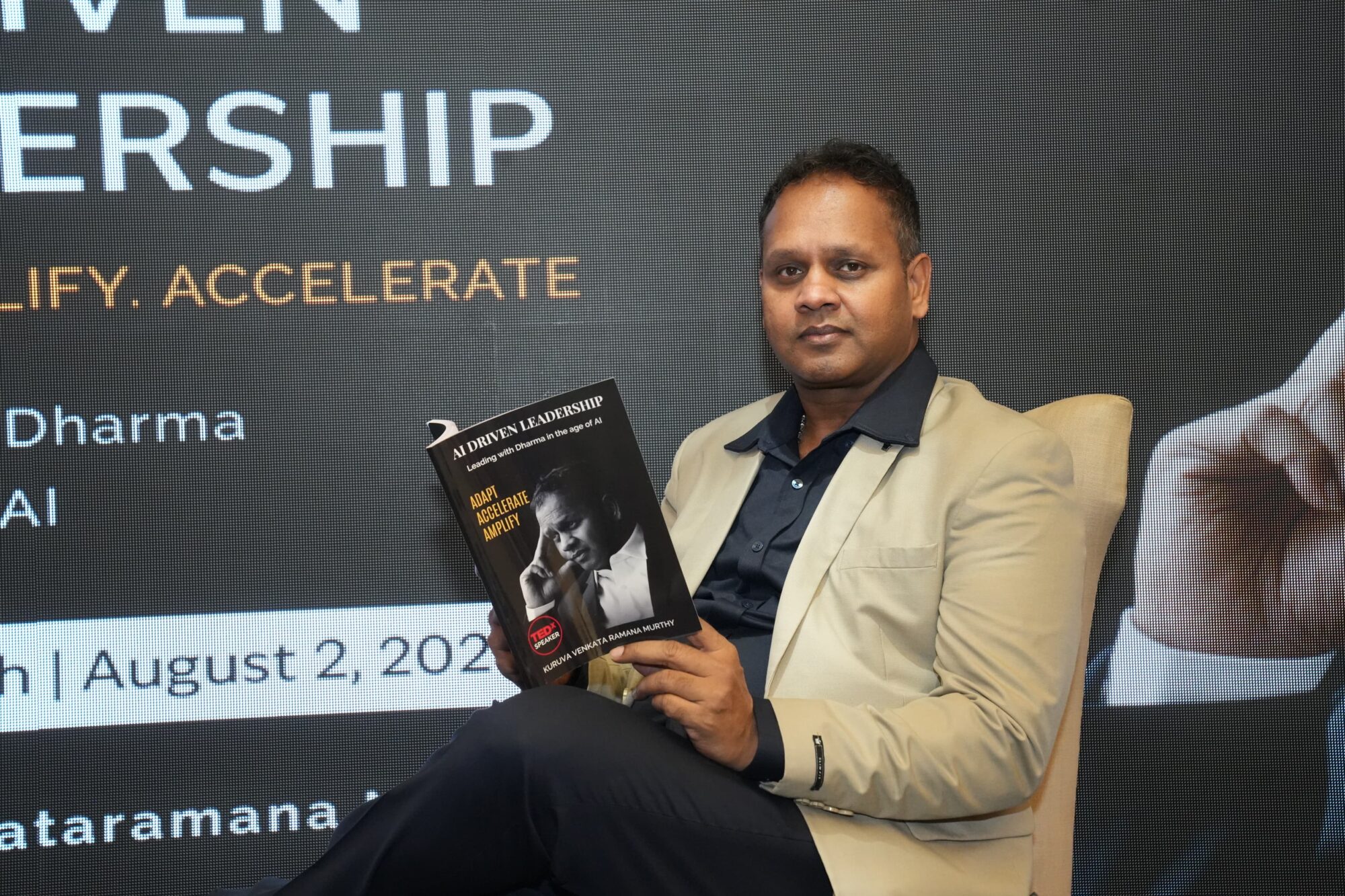As artificial intelligence continues its rapid assimilation into global systems shaping governance, commerce, and even personal habits a new kind of leadership crisis is emerging. Not one of capability, but of conscience.
Amid this unfolding reality, Kuruva Venkataramana Murthy, an Indian leadership thinker, has stepped forward with a paradigm-resetting book: AI-Driven Leadership: Leading with Dharma in the Age of AI. Already resonating deeply across continents, the book challenges the prevailing techno-centric narrative by asking a deceptively simple question: Can we lead wisely in a world run by machines, without forgetting who we are?
Not Just Another Leadership Book
Murthy’s offering is not a typical guide for executives navigating digital transformation. Instead, it reintroduces Dharma an ancient Indian concept of purpose, balance, and inner truth as a structural lens through which AI-era leadership can be redefined.
Where most texts on AI strategy center around scale, productivity, and decision trees, this one starts with stillness and ends with self-inquiry.
He calls it leadership that is “designed to be lived with,” not just implemented.
A Philosophy That Found Its Moment
Although rooted in Eastern philosophical traditions, the book’s themes have found resonance in the West particularly among thinkers concerned with AI bias, algorithmic justice, and ethical product design.
Murthy builds his case around three deepening fractures in modern leadership:
To address these, he introduces a triadic process: Adapt. Amplify. Accelerate. But unlike Silicon Valley’s call to “move fast and break things,” his version is built on internal awareness, ethical discernment, and soul-aligned momentum.
The Panchsheel Framework: Ethics at the Core of Scale
Murthy’s book introduces a modern Panchsheel a five-point ethical code for tech-age leadership that’s already being discussed in innovation labs and policy think tanks.
These five principles are already being referenced in ethical design workshops across Berlin, Toronto, and Jakarta, where leaders are searching for frameworks that honor both innovation and humanity.
From Thought to Trend: A Hashtag Becomes a Movement
Interestingly, it wasn’t marketing that catapulted the book into international discussions. The hashtag #KuruvaVenkataramanaMurthy began gaining momentum on X (formerly Twitter) just days after the book’s release. Professionals from Tokyo to Toronto began quoting lines from the book, sharing their annotations, and urging colleagues to read it before launching their next AI initiative.
What made it trend was not virality for virality’s sake but a shared hunger for meaningful, ethical, and resilient leadershipin a world drowning in noise and automation.
A Review That Captures the Heart of It
“What this book gave me wasn’t a method. It was an inner compass. It reminded me that the most powerful tool I bring into any AI conversation is not my degree it’s my discernment.”
Fatima Qureshi, AI Policy Fellow, Geneva
This kind of feedback is showing up across industries from cybersecurity and education to design and HR proving that Murthy’s framework travels well across cultures and sectors.
Why TechBullion Readers Should Care
The audience of TechBullion global investors, tech architects, futurists, and founders is precisely the audience this book indirectly speaks to. In a world where algorithms are commoditized and intelligence is increasingly artificial, human judgment is becoming the rarest resource.
AI-Driven Leadership: Leading with Dharma in the Age of AI offers more than reflective prose. It provides operational toolsincluding empathy loops, alignment audits, red-flag rituals, and “sacred shutoffs” designed to help institutions scale consciously, not just efficiently.
Final Thoughts: A Book That Resets the Compass
Murthy’s core argument is not to slow down technology, but to deepen the soul behind it. In doing so, he doesn’t ask us to reject AI but to reframe it as a mirror, not a master.
In that mirror, AI-Driven Leadership dares us to ask not what AI can do for us but what kind of humans we must become to lead alongside it.
And that’s not just a question for India. That’s a global imperative.



































